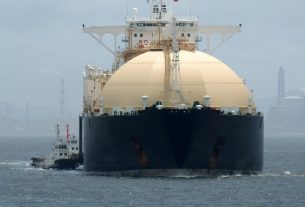United States – A multi-lab team of scientists from ORNL is researching the feasibility of using energy-dense biofuels like biocrude and bio-oil to meet new emission limits for cargo ships.
Cargo ships transporting commodities around the world are powered by four-story-tall two-stroke engines that run on the cheapest cut from the bottom of the petroleum barrel, a heavy fuel oil (or HFO) filled with ash and so sticky that it must be heated onboard before use. The International Maritime Organization’s new regulations compel these ships to satisfy progressively strict reductions in carbon dioxide, particulate matter, and sulfur emissions over the next three decades.
Potential solution
Biocrude and bio-oil may provide a solution. These fuels, which are naturally lower in sulfur, burn cleaner and produce less particles than HFO. They also have a lower carbon footprint than traditional fuels because they are renewable. Biocrude and bio-oil are less expensive than biodiesel and other refined fuels since they require significantly less processing.
The opportunity is substantial. Cargo ships transport more than 80% of the world’s transported products. Globally, maritime transport consumes around 330 million metric tons of gasoline per year, which is comparable to the total utilized in US jets and heavy-duty trucks. Due to a variety of variables, including great distances traversed and heavy freight weights, these sectors are challenging to supply with electricity and batteries.
There is keen interest in the shipping community to learn more about the emissions reduction potential, compatibility, sustainability, and economics of using biofuels. In response, the U.S. Department of Energy Bioenergy Technologies Office (BETO) and researchers from ORNL, Argonne National Laboratory, National Renewable Energy Laboratory (NREL) and Pacific Northwest National Laboratory (PNNL) have teamed up to provide scientific data and analysis to inform stakeholder decision making.
Promising results
When the study team initially investigated this notion in 2018, they cooperated with Thompson, issuing a technical paper about the prospects and limitations of using biofuels in the marine sector. This laid the stage for a 2020 workshop with industry leaders such as Maersk and Exxon Mobil to gauge interest and fine-tune the scientific questions to be answered.
Preliminary results from an ORNL study of blended bio-oil and HFO were promising. Scientists evaluated various mixes of HFO and bio-oil up to 50% by mass and found that good blend stability, reduced viscosity for HFO, and acceptable compatibility for low blend levels suggest that bio-oils could be suitable for use as marine fuel.
ORNL is now collaborating with experts across the national laboratory system to tackle additional technical questions about biofuel-HFO blends and to analyze the long-term sustainability and economics of using these fuels in the shipping industry.
All hands on deck
PNNL is contributing biocrude expertise to the initiative, creating a series of samples for use in ORNL’s technical feasibility studies. NREL is doing the same for bio-oil, as well as offering techno-economic analyses of other fuels. To produce a really low carbon fuel, Argonne is investigating the total environmental and sustainability factors. ORNL is creating a computational engine model in order to screen potential innovative fuels prior to engine evaluation.
Integrating these capabilities and expertise across national laboratories is the quickest way to supply the data needed to inform the maritime industry, which is under some time pressure to choose a series of suitable paths to meet the new regulatory standards. The timescale may appear lengthy, but it is actually rather short when you consider the industry’s huge scale and diversity, as well as the time required to create and accept new technologies or fuels. These ships can’t turn on a dime, but research funded by BETO can help chart a new path toward decarbonization and lower-risk emissions.




